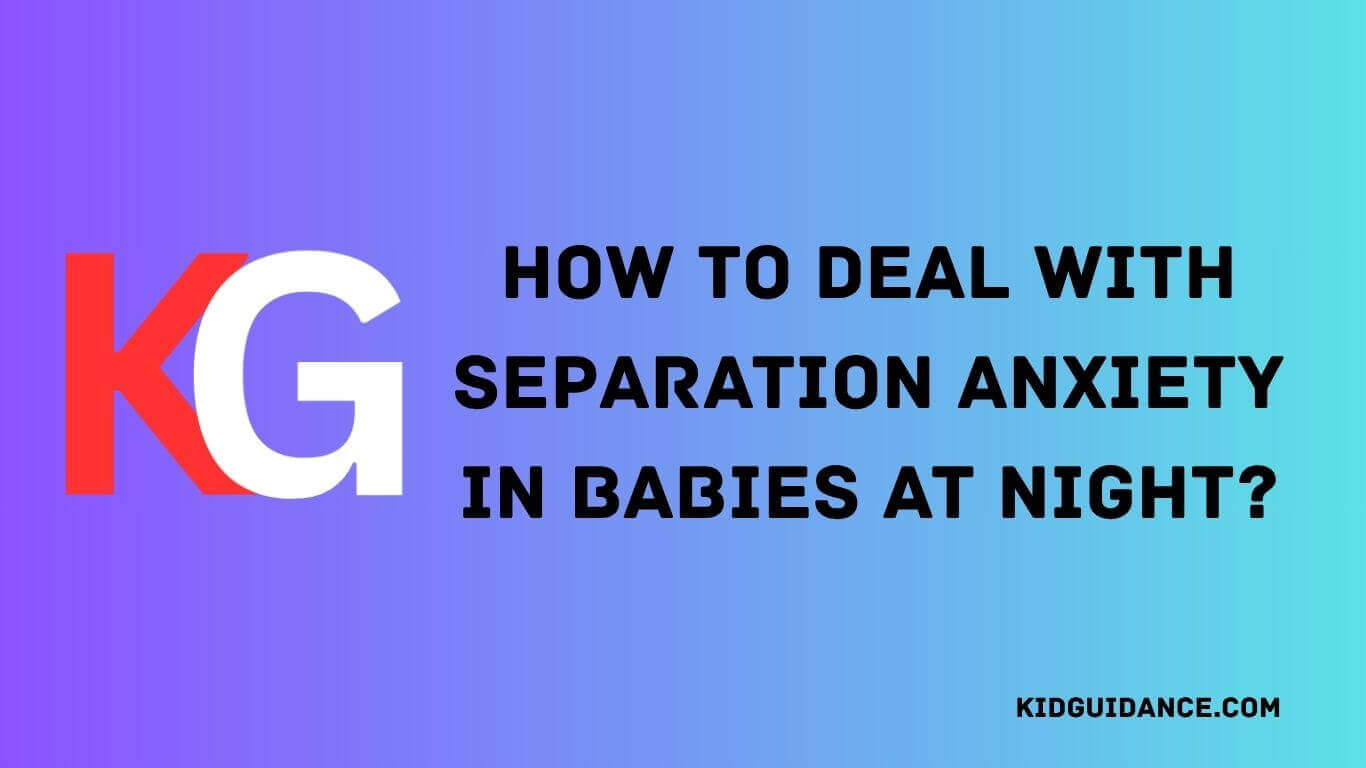Sleepless nights and tearful goodbyes can break any parent’s heart. If you’re wondering how to deal with separation anxiety in babies at night, you’re not alone—I’ve faced the same struggles. Drawing from both research and my personal journey, this guide offers gentle, proven ways to help your baby feel safe and sleep better. Let’s walk through it together—start reading and discover what truly works.
What Is Separation Anxiety in Babies?
Separation anxiety usually starts around 6 months. Your baby suddenly realizes that when you leave, you’re not instantly coming back—and that can be scary. This happens because your baby is developing something called “object permanence.” Simply put, they now know you exist even when you’re out of sight.
When Does It Happen—and How Long Does It Last?
Most babies go through separation anxiety between 6 to 13 months. The intensity may rise again around 9–10 months, and sometimes at 12–13 months too. How long does separation anxiety last in babies at night? It varies. Some babies breeze through it in a few weeks. Others may take a bit longer. It all depends on their personality and environment.
Why Is Nighttime Worse?
At night, the world is dark and quiet. No toys, no noise, no distractions. So it’s no surprise that your baby’s fears feel louder when they’re alone. They wake up, don’t see you, and cry. Add to that some strong sleep associations—like being rocked or fed to sleep—and they’re more likely to wake and need you again to fall back asleep.
I remember my daughter’s 7-month sleep regression. She’d scream the moment I stepped away. I’d be sitting on the floor beside her crib, holding my breath. It was tough, but it got better.
How to Help Baby Overcome Separation Anxiety at Night
Build a Solid Bedtime Routine
Babies love patterns. A warm bath, a bedtime story, soft cuddles, then crib. Doing the same steps every night helps your baby know what’s coming. This routine makes bedtime feel safe.
Make the Sleep Environment Comfortable
Use a nightlight. Try white noise. Place a familiar soft toy nearby—just make sure it’s safe. Your baby’s room should feel calm and secure.
Try Gentle Sleep Training
If you’re asking, “Is it okay to let baby cry during separation anxiety?”—the answer is, it depends. A little fussing is okay, but you don’t want to push too hard if they’re in peak anxiety mode. Methods like the Chair Method or Return and Reassure can work wonders. They let your baby know you’re nearby, even if you’re not holding them.
What worked for us was staying in the room the first few nights. I sat beside the crib, humming. Each night, I moved a bit farther away. Within a week, she was sleeping through the night.
What to Do During Night Wakings
Wait and Watch
Sometimes babies cry out but settle quickly. Give it a moment before you rush in.
Stay Low-Key
If you go in, keep it calm. Speak softly. No lights, no picking up unless absolutely needed.
Don’t Start New Habits
Try not to bring your baby into your bed. It might feel like a quick fix, but it can make things harder later. Stick to the plan, gently and consistently.
Daytime Habits That Help at Night
Practice Short Separations
Play peek-a-boo. Step into another room for 30 seconds and come back. These little moments help build trust. Your baby learns you always return.
Balance Together Time and Independence
Spend focused time cuddling, playing, talking. Then encourage solo play. Also, say goodbye with a smile when stepping out, even for a minute. Say “I’ll be back soon.” Use the same words each time.
Do Moms Experience Separation Anxiety Too?
Absolutely. It’s hard hearing your baby cry. It’s normal to feel guilt or sadness. I cried the first time I left my daughter overnight with her grandma. But I also learned it was okay. She was safe. And I was a better mom after some rest.
If you’re feeling overwhelmed, talk to someone—a friend, your partner, or even your pediatrician. Journaling helped me. So did remembering: this phase doesn’t last forever.
FAQs
How to deal with separation anxiety in babies at night?
Create a bedtime routine, keep the room calm, and use gentle sleep training. Stay close but consistent to help your baby feel safe.
How to help baby overcome separation anxiety at night?
Use soft lights, white noise, and a comfort item. Stick to the same bedtime steps each night so your baby knows what to expect.
How long does separation anxiety last in babies at night?
It often starts around 6 months and may last a few weeks. Each baby is different, but consistency can help ease the phase faster.
Is it okay to let baby cry during separation anxiety?
Short crying may happen. Avoid long cries or the “cry it out” method. Choose a calm approach like the “chair method” to build trust.
Do moms experience separation anxiety too?
Yes, many moms feel sad or guilty when apart from their baby. This is normal. Self-care and support can help you feel stronger.
What age does baby separation anxiety start at night?
Most babies start feeling it around 6–7 months. It can return at 9–10 months and again near 12 months as they grow and learn.
Can separation anxiety affect baby sleep?
Yes, babies may wake more often and need comfort. A steady bedtime routine and gentle methods can reduce night waking.
What are signs of separation anxiety at night?
Crying when you leave, not wanting to sleep alone, or waking up often. Babies may cling or resist bedtime more than usual.
Should I stay in the room during separation anxiety?
Staying nearby can help. Use soft words or gentle touch, then step away slowly. This helps babies feel safe and learn to sleep.
Can daily play help with separation anxiety at night?
Yes, short periods of play away from you during the day help your baby get used to being alone at night.
Final Thoughts: You’re Not Alone
Separation anxiety at night is hard—for both baby and parent. But it’s a sign of strong bonding. Be patient. Be consistent. Your baby is learning to trust that you will always return. And that’s a beautiful thing.




